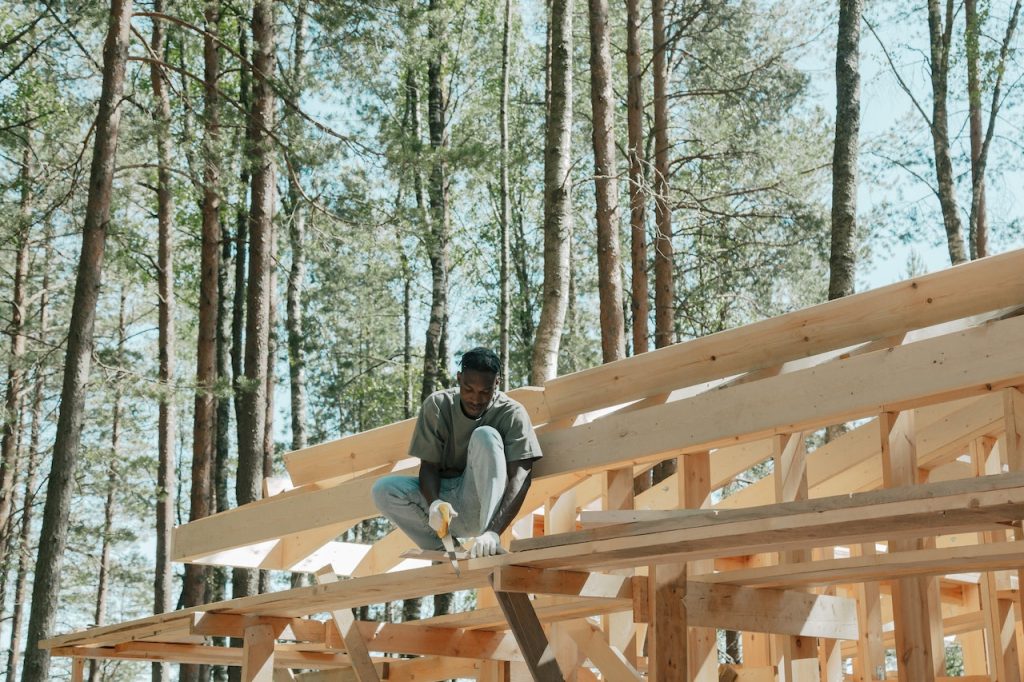Wood beams are essential components in construction projects, providing structural support and a timeless aesthetic. They are widely used in residential and commercial construction, from framing roofs to supporting floors and walls.
What is a Wood Beam?
A wood beam is a long, straight piece of lumber that provides support to a structure. They are used to distribute the weight of a structure evenly across the foundation and to support the weight of the structure above. Wood beams are typically made of solid wood or engineered wood products.
Types of Wood Beams
1. Solid Wood Beams
Solid wood beams are cut from a single tree trunk and are available in various sizes and shapes. They are typically used for decorative purposes, such as exposed ceiling beams, but can also provide structural support. Solid wood beams can be made from a variety of tree species, including pine, oak, cedar, and Douglas fir.
2. Glulam Beams
Glulam beams are engineered wood products made by gluing together several layers of lumber. They are stronger and more stable than solid wood beams, and their size can be customized to fit the specific requirements of a project. Glulam beams are commonly used in roof construction, as well as in bridges and other large-scale projects.
3. Laminated Veneer Lumber (LVL) Beams
Laminated Veneer Lumber (LVL) beams are also engineered wood products made by layering thin sheets of wood veneer and gluing them together. They are similar to glulam beams in strength and stability but are lighter and more flexible. LVL beams are often used in residential and commercial construction, such as for load-bearing walls and beams.
4. Parallel Strand Lumber (PSL) Beams
Parallel Strand Lumber (PSL) beams are another type of engineered wood product made by gluing together strands of wood with resin under high pressure. They are strong, stable, and resistant to warping, making them ideal for supporting heavy loads. PSL beams are commonly used in roof construction, as well as in floors and walls.
Wood Beam Joint Methods
Connecting wood beams requires precise joinery to ensure stability and durability. Here are some of the most common wood beam joint methods:
1. Butt Joint
A butt joint is the simplest and most common joint used to connect two pieces of wood end-to-end. It involves cutting the ends of the beams square and then attaching them together with screws or bolts.
2. Half-Lap Joint
A half-lap joint is created by cutting a notch into the end of each beam, which allows them to interlock with each other. This joint is stronger than a butt joint and is often used in roof construction.
3. Mortise-and-Tenon Joint
A mortise-and-tenon joint involves cutting a square or rectangular hole (mortise) into one beam and a matching projection (tenon) on the other. The tenon is then inserted into the mortise and secured with glue and wooden dowels or pegs.
4. Dovetail Joint
A dovetail joint is a more complex joint that involves cutting a series of interlocking wedge-shaped projections and notches into the ends of the beams. This joint is extremely strong and is often used in heavy timber construction.
Conclusion
Wood beams are versatile, durable, and aesthetically pleasing components of construction projects. Whether for structural support or decorative purposes, there are several types of wood beams to choose from, each with unique characteristics and applications. By understanding the different types of wood beams and their joint methods, builders can create safe, stable, and long-lasting structures.


